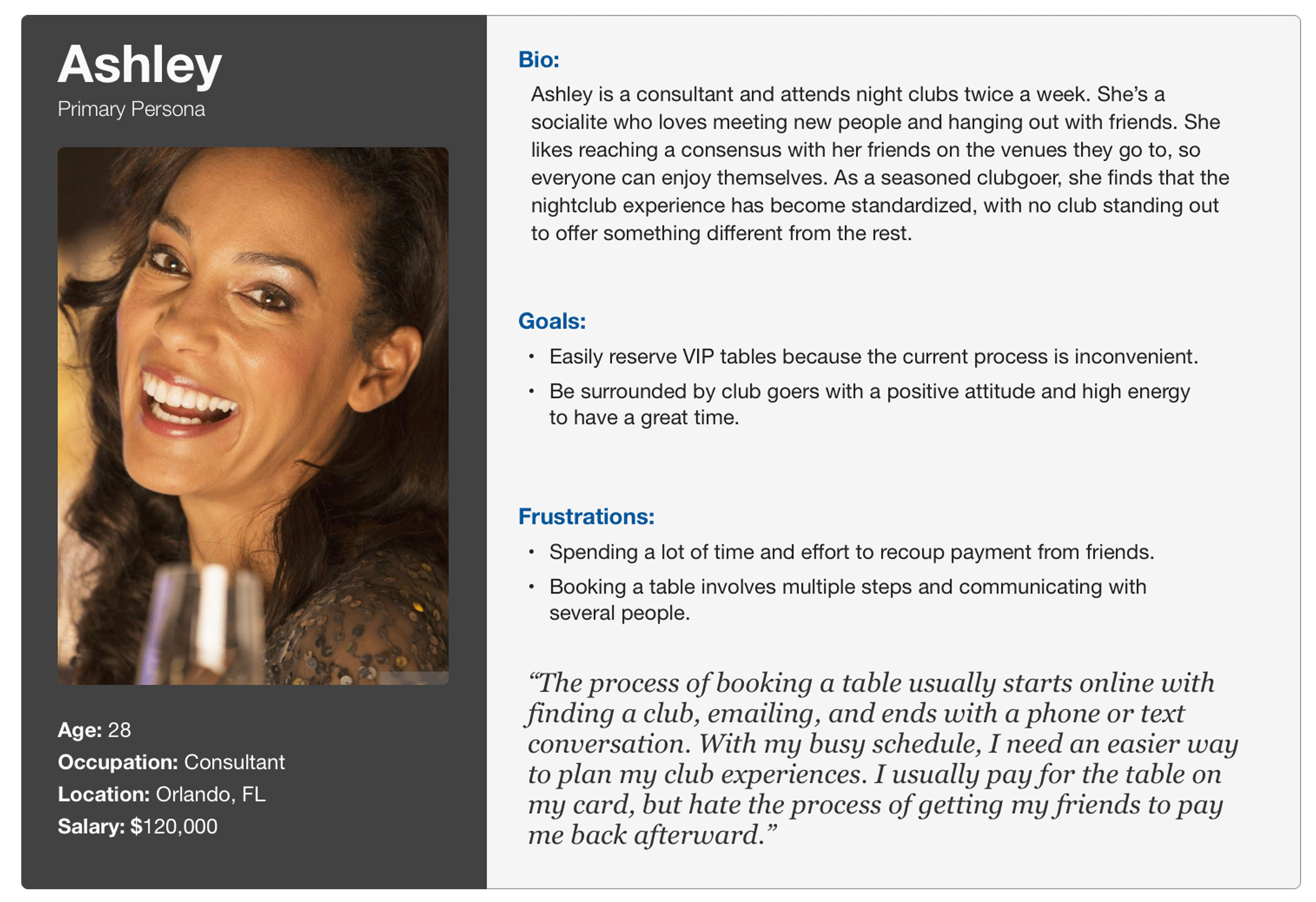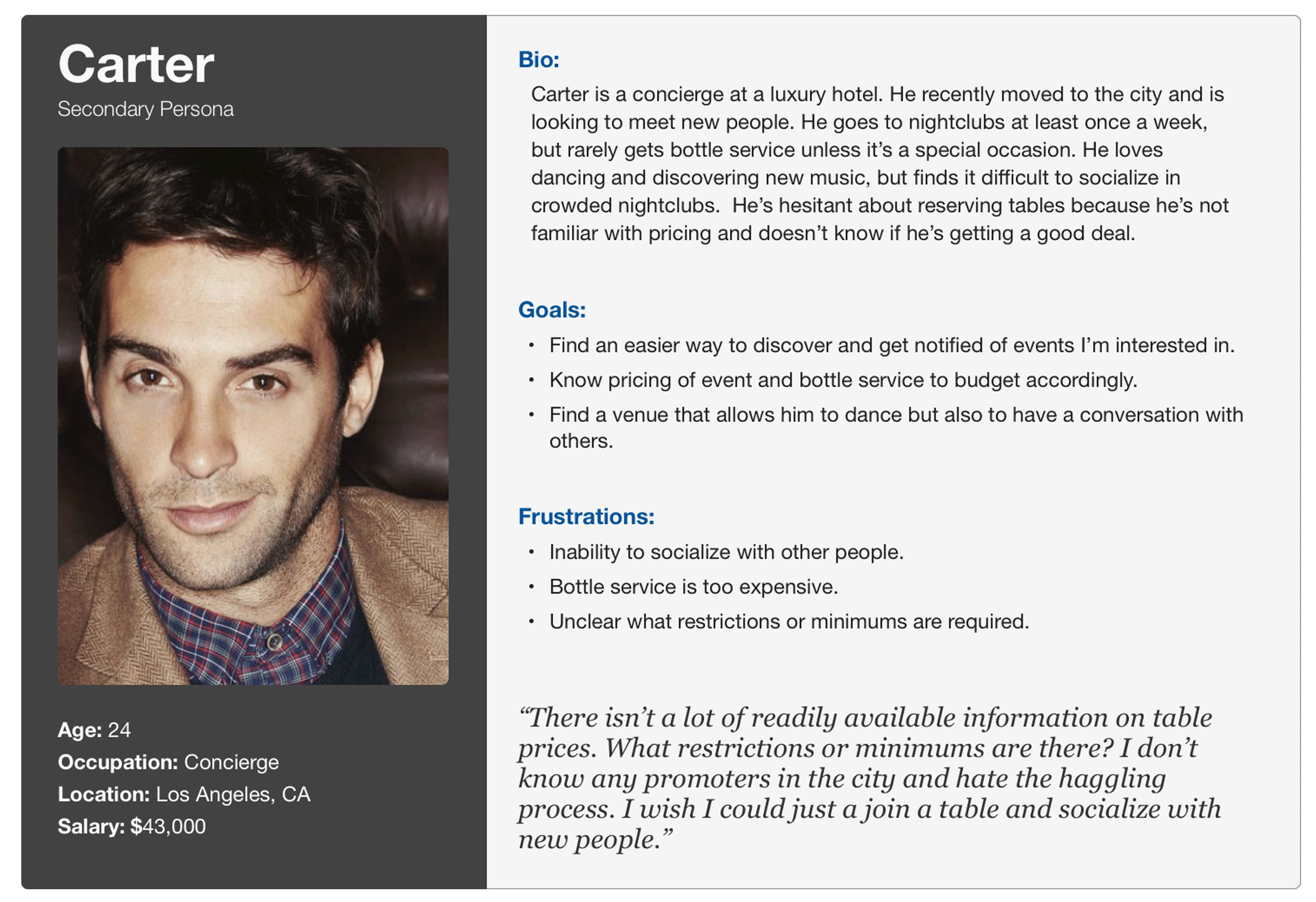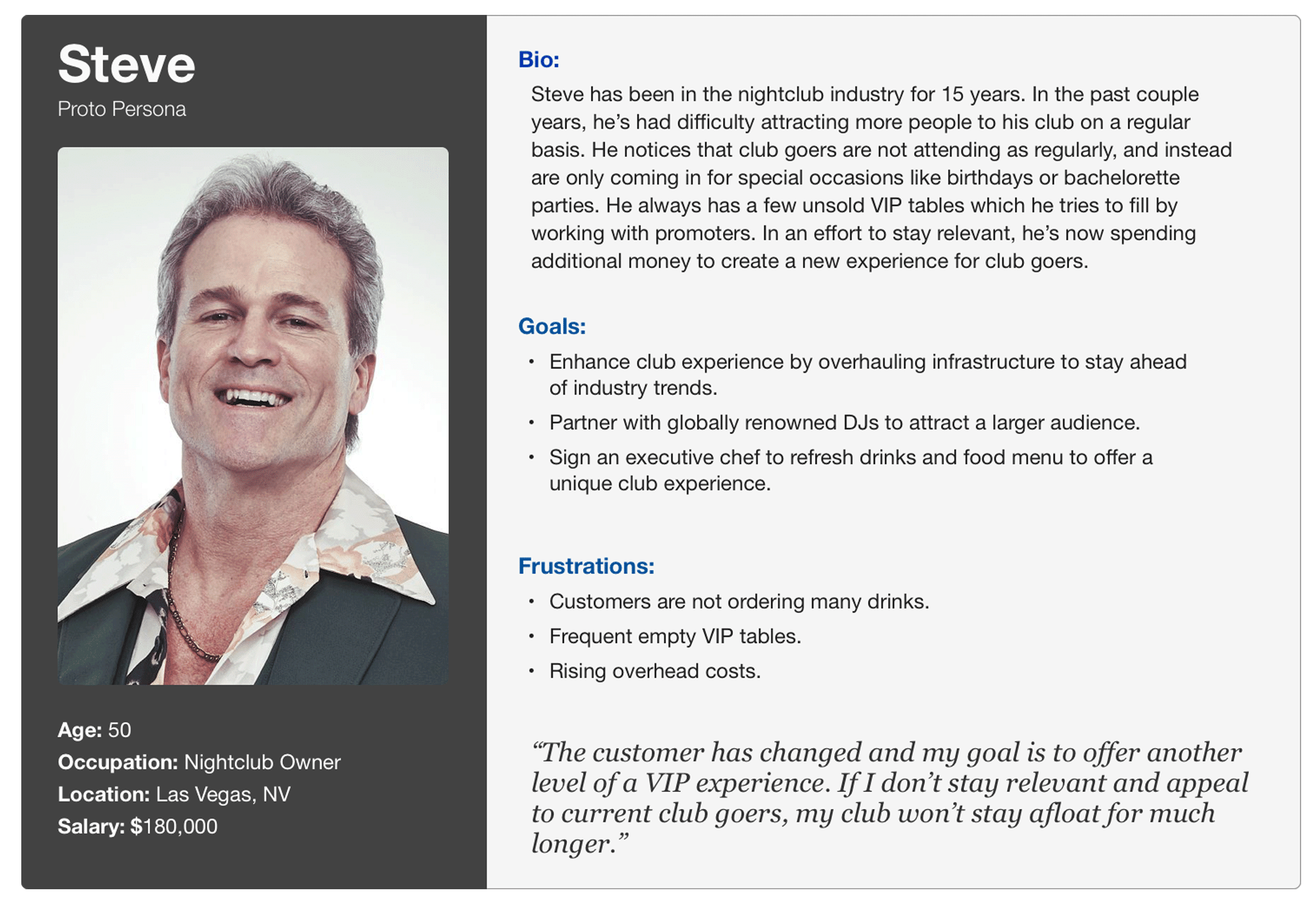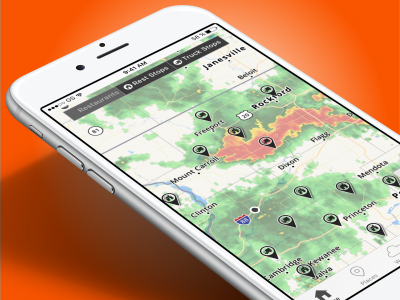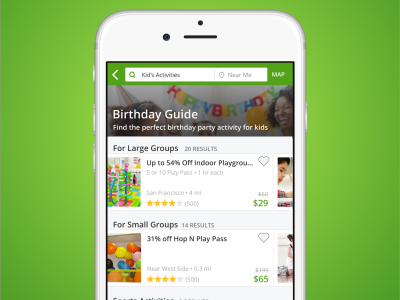Challenge
Create an app that gives club goers easier access to VIP nightlife experiences.
According to the American Nightlife Association, there are around 69,987 clubs and bars in the US, with 8.6% reporting as “nightclubs”. In a 2015 survey of 1,444 bars, nightclubs, and lounges 70.1% of the respondents provide VIP sections and 65% offer bottle service to their guests. How can we eliminate the “middle men” of traditional bottle service while ensuring club owners can maximize revenue?
Research
I interviewed 10 club goers to learn about their experience going to clubs and/or reserving VIP tables. Due to time constraints, we were unable to interview club owners so we focused on the consumer side of the app.

Overall, users are not using any event/club specific apps to access nightlife experiences. Most people rely on traditional google searches to find events at a specific time. Word of mouth and referrals are the strongest stamp of approval when deciding if he/she should go to an event.
Research Findings
- Users want an easier way to discover and get notified of events they are interested in because they are unaware of what’s going on.
- Having to use multiple sources to reserve a table is inconvenient and time consuming
- Lack of information regarding VIP table prices prevents users from booking more frequently
- Users want to know they’re getting a good deal and do not enjoy haggling with promoters.
User Quotes
“Biggest obstacle would be not knowing prices. If more information is available I would be interested”
“I emailed clubs via their website and told them to call or text me. The reservation process usually starts online and ends with text or phone conversation.”
“Sometimes you get pressured into getting VIP tables that cost a lot more.”
Personas
Based on my research findings, I created a primary and secondary persona to help guide my design decisions. Since we did not speak with any club owners, we created a proto persona to ensure we were also accommodating their needs and goals in our design as well.
- The primary persona is the more frequent clubber who needs an easier way to reserve tables.
- The secondary persona attends clubs less frequently and is looking for more information to help him make purchasing decisions.
- Our proto persona is a club owner who is struggling to attract customers who return frequently.
Site Map
I created a sitemap to represent how different sections of the app are related to each other. This high level view helped me understand the hierarchy of each screen on the app.

Design Exploration
Using pen and paper, my partner and I generated a few ideas for several of the screens. Because users mainly relied on Google searches for events, we wanted the home screen to focus on event discovery. For the users who were looking specifically for a date or DJ, they can use the search function.
We wanted to implement a bidding feature to make bottle service more affordable for consumers and help club owners fill empty tables. Club owners can set a “Reserve now” price, similar to eBay’s “Buy it now” to maximize profit during popular events.

Wireframes
Moving into Sketch, I created low fidelity wireframes to begin understanding the layout and hierarchy of each screen. The app is a combination of event discovery and VIP table reservations because these are tasks users typically would use multiple apps for. Our table reservation process is unique because it gives users the ability to see where the table is located via a map and allow them to place a bid on it.
On the results page, I wanted to provide a quick way for people to interpret the information without needing to look at data in the charts. Providing an overview with a breakdown helps build trust by being transparent with what fees are Pollen takes from the total revenue earned.
Design Refinement
Search
Users were unclear how to search for a particular category such as type of music. They were uncertain if typing a music genre into the search bar would produce results. I modified the search screen to give users quick access to search by category such as venue, music, date, and event type.

Events Calendar
Users found the date selection unhelpful because it did not include days of the week. I redesigned this calendar view by replacing the month with days of the week so that users would not need to reference a separate calendar.

Reserve Table
Users wanted to an easy way to know how many tables were available to book. I modified the buttons to include more information to help users make a decision.

Checkout
Users mentioned they were not able to confirm their payment method before purchasing. I modified the purchase screen to allow users to verify payment method and cost before confirming their purchase.
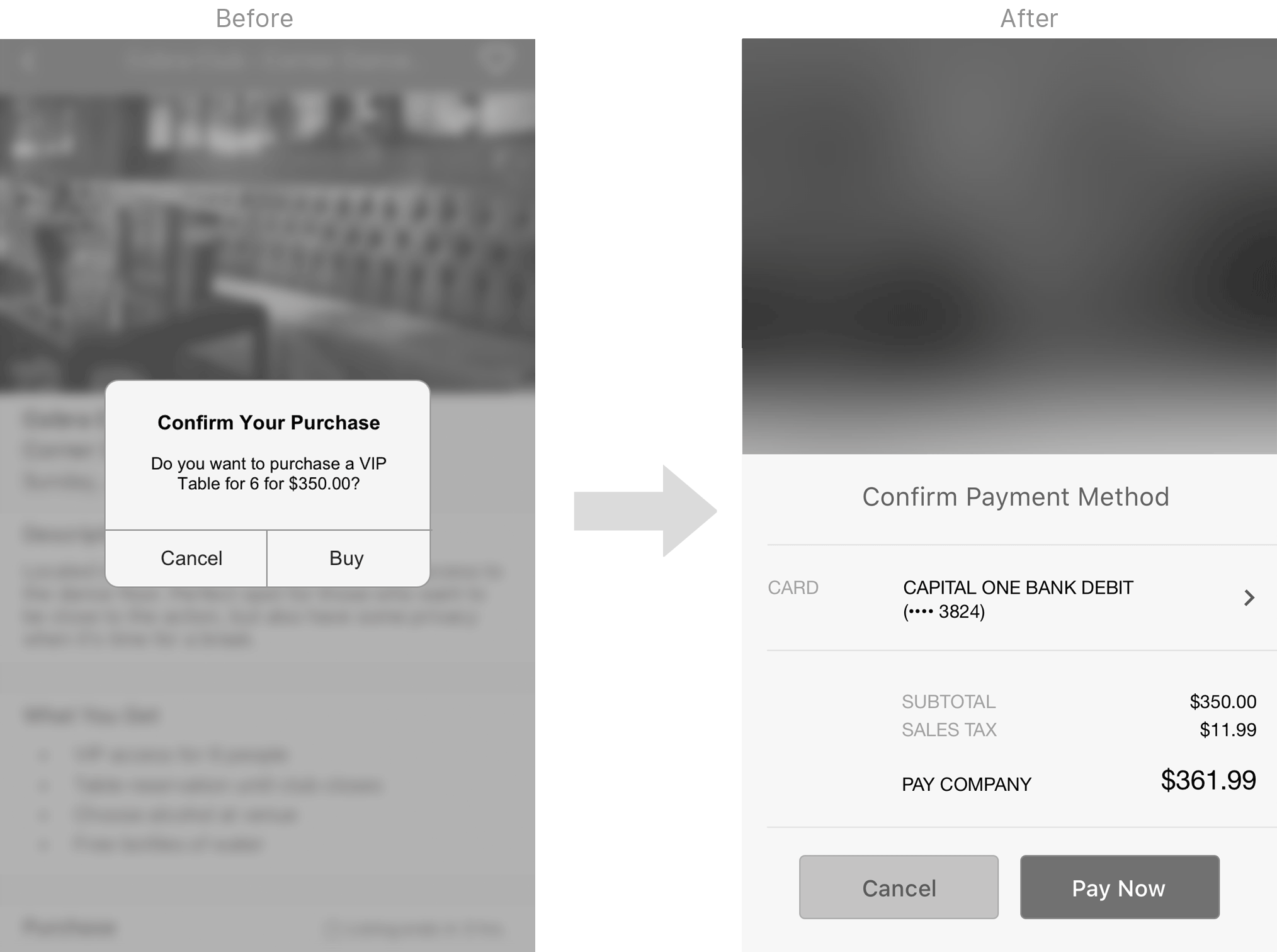
Prototype
I created a prototype using Invision which you can see the final product below.
High Fidelity Mockup

EXAMPLE OF MY VISUAL DESIGN TREATMENT
Result
Clients were impressed with our ability to translate their rough ideas and concepts into high quality deliverables.
They appreciated the thoroughness of our research to understand their product/market fit. We had an in depth conversation around their competitors and discussed usability issues and feature differentiators. Informing them of UX best practices really helped them understand the opportunity to stand out among the current competition.
Mark lead a team that took on a UX design project for me. Mark and his team were extremely diligent and thorough. They made sure they listened to exactly what I wanted and my needs, and were able to take the little bit I had to give them and turn it into a complete UX design presentation that included market research for my product. Mark and his team were extremely professional and diligent and kept me up to date on where the project stood without wasting any of my time, each call was productive (which I very much appreciated). I was very impressed with how much Mark and his team were able to accomplish in a 2 week project, as well as the quality of the deliverables provided, and I would absolutely use him again.

Key Learnings
Creating an app completely from scratch was challenging, but rewarding. There was nothing to work from but it provided me an opportunity to explore and implement ideas without any constraints. While research is important before beginning any project, it was crucial for this project to first understand if there was product market fit. After speaking with users about their nightlife experiences, I discovered key opportunities to improve their experience while also ensureing we had enough differentiation from competitors.



